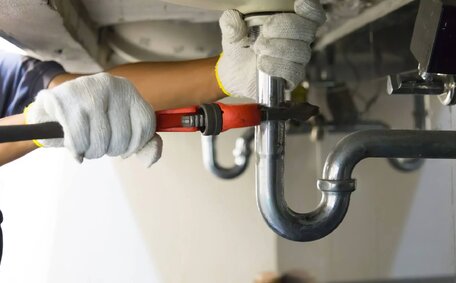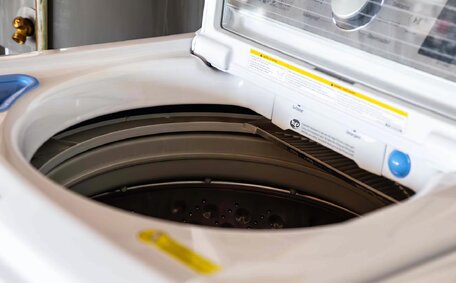Introduction to Epoxy Resin Pipe Relining
Epoxy resin pipe relining is a trenchless method of restoring damaged pipes without having to dig them up. This innovative process involves coating the inside of pipes with a durable epoxy resin compound. Once cured, the epoxy resin effectively creates a 'pipe within a pipe’ that seals cracks and restores flow.
Epoxy resin relining offers several advantages over traditional pipe replacement; it’s quicker, less disruptive, more cost-effective, and doesn’t damage surrounding infrastructure or landscape.
The epoxy resin compounds used are NSF/ANSI 61 and NSF/ANSI 14 certified, meaning they comply with strict standards for materials that come into contact with drinking water. This ensures the products are safe for your home’s potable water supply systems.
Expected Lifespan of Epoxy Pipe Relining
When applied correctly, epoxy resin compounds can extend the lifespan of pipes by 30 to 50 years. This remarkable longevity is due to the durable, corrosion-resistant nature of epoxy. Once fully cured, the epoxy lining is incredibly tough and able to withstand years of exposure to flowing water, pressure changes, temperature fluctuations, and chemical contact.
The thickness of the coating applied is important - thicker applications last longer.
The types of pipes being relined also plays a role. Periodic maintenance is vital for preserving the integrity of the lining.
To get the most out of an epoxy pipe relining project, have any underlying leaks or pipe damage repaired prior to coating. It’s also a good idea to schedule follow-up CCTV inspections every 5 years or so to check on the lining condition. As long as the epoxy remains intact with no major flaws, it will continue protecting pipes from deterioration.
Factors Impacting Epoxy Pipe Lining Longevity
There are several key factors that affect the durability and lifespan of epoxy pipe linings:
Installation Quality
Professional installation is paramount for epoxy lining longevity, requiring correct curing and bonding to the pipe’s inner surface. Improper preparation or rushed application can result in early failure.
Epoxy Product Selection
Using high-quality 100% solids, solvent-free epoxy resins, which are often more durable than diluted alternatives, along with compatible resins and hardeners from the same manufacturer, significantly impacts longevity.
Environmental Conditions
Epoxy lining durability can be affected by external factors such as temperature extremes, UV radiation, soil chemistry, and encroaching tree roots. To mitigate temperature variations and sunlight exposure, deeper pipe burial is recommended. Proper drainage prevents excessive moisture contact.
Pipe Material & Condition
The underlying pipe condition influences longevity. Intact straight sections of pipe are more conducive to successful relining.
Pipes with severe corrosion or instability are more likely to fail. Clay pipes, less susceptible to expansion and contraction, tend to outlast steel ones.
Water Chemistry
Epoxy linings resist corrosion, acids, and alkalis well. However, very aggressive water chemistries slowly degrade the epoxy. Lining drinking water pipes generally exposes epoxy to less harsh conditions.
Signs Your Epoxy Lining Needs Replacement
There are several signs that indicate an epoxy pipe lining may be failing and require replacement:
Visible Damage
Inspect your pipes for deterioration signs like cracks, bubbling, breaks, or thinning epoxy coating. Dark stains on pipe exteriors may indicate lining breaches.
Flow or Pressure Issues
Decreased water flow or pressure inconsistencies could signal detachment of the epoxy lining, resulting in flow restrictions or blockages.
Water Quality Changes
New discoloration, unusual smells, or taste changes in water could indicate contamination from a compromised epoxy lining, where exposed pipe surfaces become vulnerable to bacteria.
Pinhole Leaks
Tiny pinhole leaks in pipes suggest areas where the epoxy lining has been penetrated, allowing water to seep out. Rust stains on pipe exteriors around leaks is another indicator.
Regular inspection of the epoxy lining with CCTV and vigilance for deterioration signs can facilitate early problem detection, preventing escalated lining failures and subsequent pipe corrosion.
Best Practices for Maintaining Epoxy Pipes
To extend the lifespan of epoxy-lined pipes and keep them flowing well, follow these best practise maintenance tips:
Regular Sweeping & Mopping
Annual cleaning of interior epoxy pipe surfaces to remove mineral deposits and debris contributes to maintenance. Professionals can perform this using pipe cleaning techniques and CCTV cameras for visual assurance.
Moderate Water Flows
Avoid prolonged high-velocity water flows. The abrasive friction can gradually erode epoxy linings over time. Flow regulators can help moderate water speeds.
Prompt Leak Repairs
Fix any leaks promptly as moisture contacting the exterior of epoxy lined pipes can cause corrosion and lining damage. Even tiny holes or cracks allow water ingress and should be patched.
DIY Cleaning Precautions
When cleaning epoxy-lined pipes, avoid using very hot water and harsh chemicals that can accelerate lining degradation; opt for cooler water and pipe-friendly cleaning agents only as needed.
Maintaining clean epoxy-lined pipes, regulating water flow, swiftly addressing leaks, and selecting gentle cleaning agents can help preserve the integrity of the lining for years.
When to Call a Professional Plumber
Minor leaks or clogs may be addressable with DIY approaches, yet certain scenarios necessitate the expertise of a licenced plumber, such as those from Carlingford Plumbing:
Major Leaks or Bursts
In the event of a major leak or burst pipe causing extensive flooding or water damage, shut off the water main immediately and seek professional help due to the risks of high water pressure and potential significant damage.
No Hot Water
Issues with hot water systems like complete outages, rumbling sounds, error code displays or leaks should be examined by professionals as they can indicate failing valves, elements, thermostats or pressure relief complications which require experience to diagnose and fix correctly.
Sewer Line Backups
If you experience sewage backups through sinks, showers or toilets, avoid using any water until the blockage has been cleared. Sewer gases released can contain dangerous fumes and attempting to clear major backups yourself with an auger could damage pipes.
Low Water Pressure
Persistent low water pressure in your home may be a symptom of issues such as blocked pipes, loose fixtures, flow restrictions, or malfunctioning pressure regulators. Without proper equipment or training, these issues will be challenging for untrained individuals to successfully troubleshoot and resolve.
While quick fixes may seem convenient, considerable expertise goes into plumbing repairs. Your safety and avoiding extensive property damages should be top priorities. Contact licenced professionals like Carlingford Plumbing at 1300 349 338 or jobs@carlingfordplumbingservices.com.au for reliable assistance.
Cost and Process of Replacing Epoxy Pipe Lining
If an epoxy pipe lining has reached the end of its lifespan and needs replacing, the average cost typically ranges from $3,000 to $7,000 depending on pipe size, length and accessibility. Epoxy pipe lining replacement involves the following steps:
- Inspecting the pipes via CCTV to assess condition and locate damage.
- High pressure cleaning the interior surfaces to remove old lining and prepare for new coating.
- Applying new epoxy resin compound and allowing to fully cure.
- Conducting final CCTV inspection to ensure successful application.
The removal of old lining can become a complex task in tight or inconveniently shaped spaces. Pipes with lots of joints or bends also make the process more complex. Copper pipes tend to be simpler to reline versus cast iron or galvanised steel.
Despite the upfront cost, the long-term cost-effectiveness of epoxy lining, with a lifespan of 30-50 years with proper upkeep, should be considered. This provides savings compared to costly pipe replacements ranging from $250 to $500 per metre.
Environmental & Safety Considerations
Epoxy resin pipe relining is environmentally beneficial compared to traditional pipe replacement. It cuts down on:
- Raw material usage
- Energy consumption
- Carbon emissions
- Waste production
Additionally, the process is less disruptive to the environment as it eliminates the need for trench excavation. Relined pipes avoid contamination risks that degraded, leaking pipes pose too. Copper, lead or other chemicals can leach into surrounding soil and groundwater if pipes corrode excessively. Epoxy coatings prevent this.
Water Safety Standards
Epoxy resin’s longevity in relining drinking water pipes meets NSF/ANSI 61 specifications, verifying through independent testing that no harmful substances leach into potable water post-curing, with thorough toxicological reviews ensuring their safe use in different environments.
Long Proven History
Epoxy compounds have over 50 years of proven performance lining drinking water systems. For example, Nuflow epoxy pipe linings installed a century ago are still functioning safely today. Such long lifespans demonstrate minimal pipe corrosion or breakdown occurs in practise.
Their safety is further reinforced by real-world installations.
Epoxy resin thus presents substantial advantages for inner pipe restoration from environmental and health safety standpoints. Its coatings mitigate pollution, safeguard water quality, and have a proven track record of durability, all without the need for disruptive pipe replacement.





